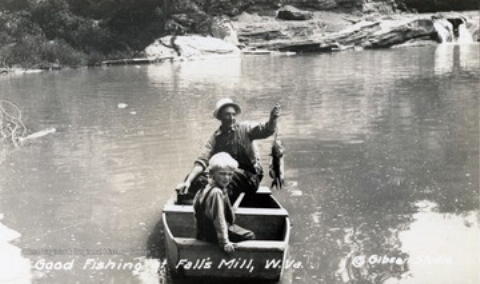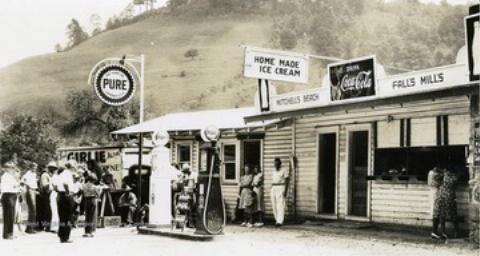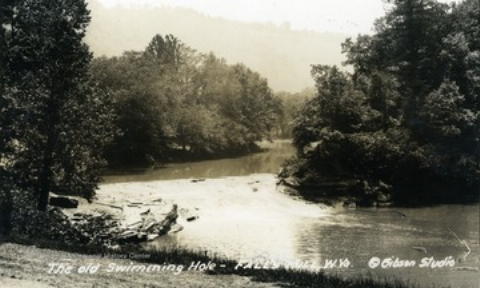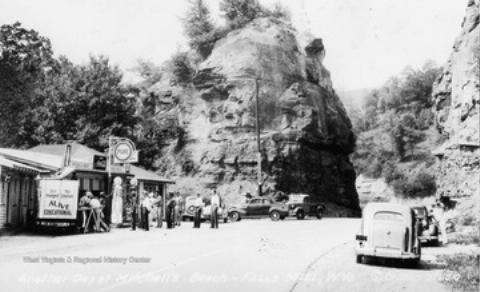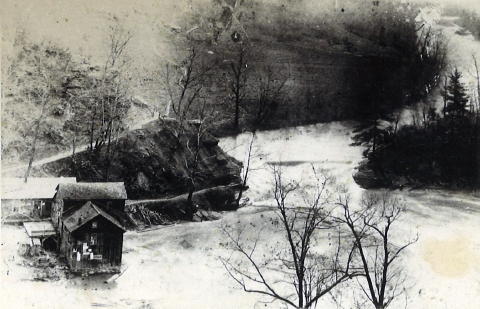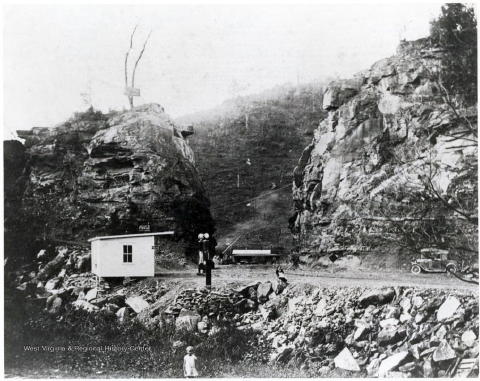LITTLE KANAWHA RIVER: SOMETIMES PEACEFUL, SOMETIMES WILD AND FREE - Historic Look At Falls Mill
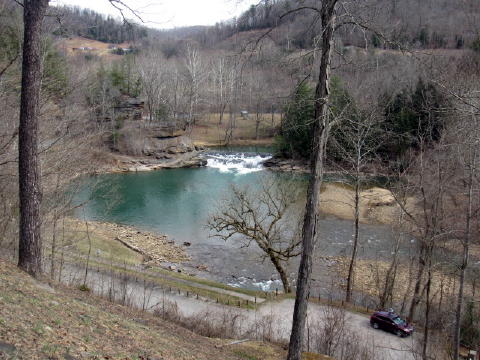
The height of the Falls Mill has shortened in time...
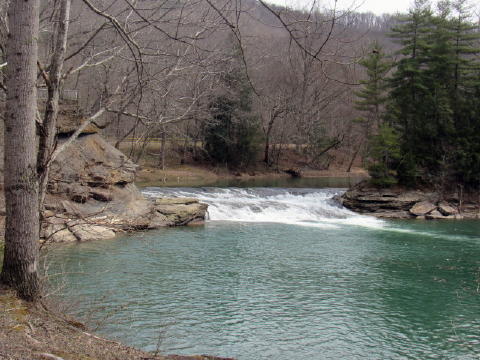
Still visited by tourists with an accompanying park...
By Bob Waver 2022
Falls Mill (Braxton County), on the headwaters of the Little Kanawha River, has been an historic marker and visiting place for over 200 years, where a fast mountain stream begins to level to a more lazy, slow moving flow.
Falls Mill had stores, shops, a school and a water-driven mill, surrounded by numerous houses, a stopping off place for pioneers Peter MuCune and Adam O'Brien, who eventually settled in Calhoun County.
A number of citizens died in the Falls Mill pool while swimming, encountering a whirlpool. Two young Roane County brothers perished there 50 years ago.
The Little Kanawha River rises at Kanawha Head, Upshur County, as a small tricklet, starting a 169 mile journey to the Ohio River at Parkersburg, then headed to the mighty Mississippi, traveling through six counties, Upshur, Braxton, Gilmer, Calhoun, Wirt and Wood.
A major development on the river was the Burnsville Dam and Lake, completed in 1976 at a cost of $56.2 million, halting major flooding downstream.
Nearby is the Bulltown Historic District.
The Little Kanawha River was valued by early European settlers who farmed the gentle valleys along its flanks and harvested timber in its headwaters.
In 1834, the Virginia General Assembly passed an act that required the owners of private dams along the stream to build locks from Parkersburg to salt wells at Bulltown, West Virginia, in Braxton County. The assembly authorized improvements to navigation in 1847.
In the 1860s, the oil industry developed along the river at Burning Springs and in 1863, the General Assembly of the Reorganized Government of Virginia passed an act that incorporated the Little Kanawha Navigation Company, which completed several locks to permit passage of steamboats as far upstream as Glenville.
It is difficult to imagine hundreds of river packets carrying goods and people up and down the river, ending in the 1930s.
Indians had left the Little Kanawha before the time of white exploration, but a small band under Chief Bull settled there in 1765, just as white settlers were entering the area.
They lived near the salt licks at a community now called Bulltown, near Falls Mill. Many of them were massacred by white men in 1772 and their bodies thrown into the river.
The upper watershed was explored by John Hacker in 1770. The pioneering Carpenter family settled in the region shortly thereafter. The Bulltown area was settled by white men in the 1770s, with settlement at Parkersburg soon following. Eventually, the communities of Burnsville, Gilmer Station, Glenville, Grantsville, Creston and Elizabeth would also be established along the Little Kanawha.
In 1838, Claudius Crozet, the director of the Virginia Board of Public Works, recommended that 10 locks and dams be constructed to permit navigation on the Little Kanawha from Parkersburg to Bulltown salt works.
The Little Kanawha Navigation Company began selling stock in 1847, and the reorganized company finally let contracts for the first four locks and dams in 1867. By 1874, boats could travel from Parkersburg upriver past Palestine, Wirt County.
These were private locks owned by the company. In 1891, the "government lock" was built near Burning Springs. The remaining locks recommended by Crozet were never built, but these five were sufficient to enable shallow-draft riverboats access all the way to Glenville and beyond.
From the mid-1800s and into the 1930s, boats powered by steam and later by gasoline carried people, mail, and freight up and down the river. The boats that plied the Little Kanawha were much smaller than the big paddle wheelers that churned the Ohio River. Even larger steamboats came to the bustling Village of Creston with the aid of the dams.
A windowed cabin, sometimes two decks tall, protected passengers and freight from the weather. Divided into rooms and a galley, the cabin was home to the crew, which sometimes included the family of the captain. A wheelhouse perched atop the vessel. Commercial navigation came to an end in the 1930s as roadways connecting the towns along the riverâs banks improved.
The West Virginia oil and gas industry developed within the Little Kanawha watershed. The stateâs first oil well and one of the very earliest in the world was drilled at Burning Springs in 1860. The Burning Springs oil field was burnt by Confederate raiders in 1863, creating an inferno so intense that oil burned on the surface of the river all the way to Parkersburg.
